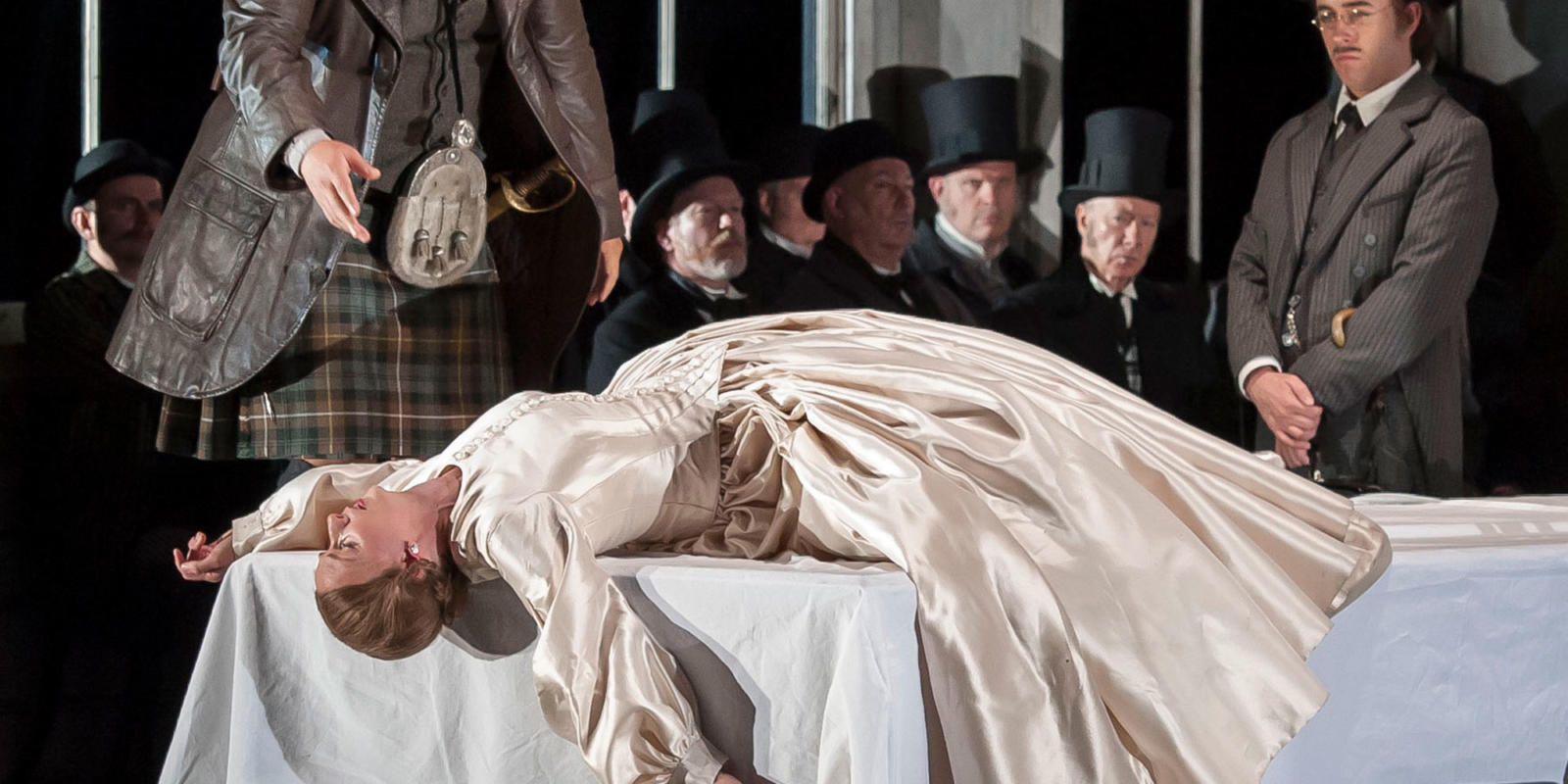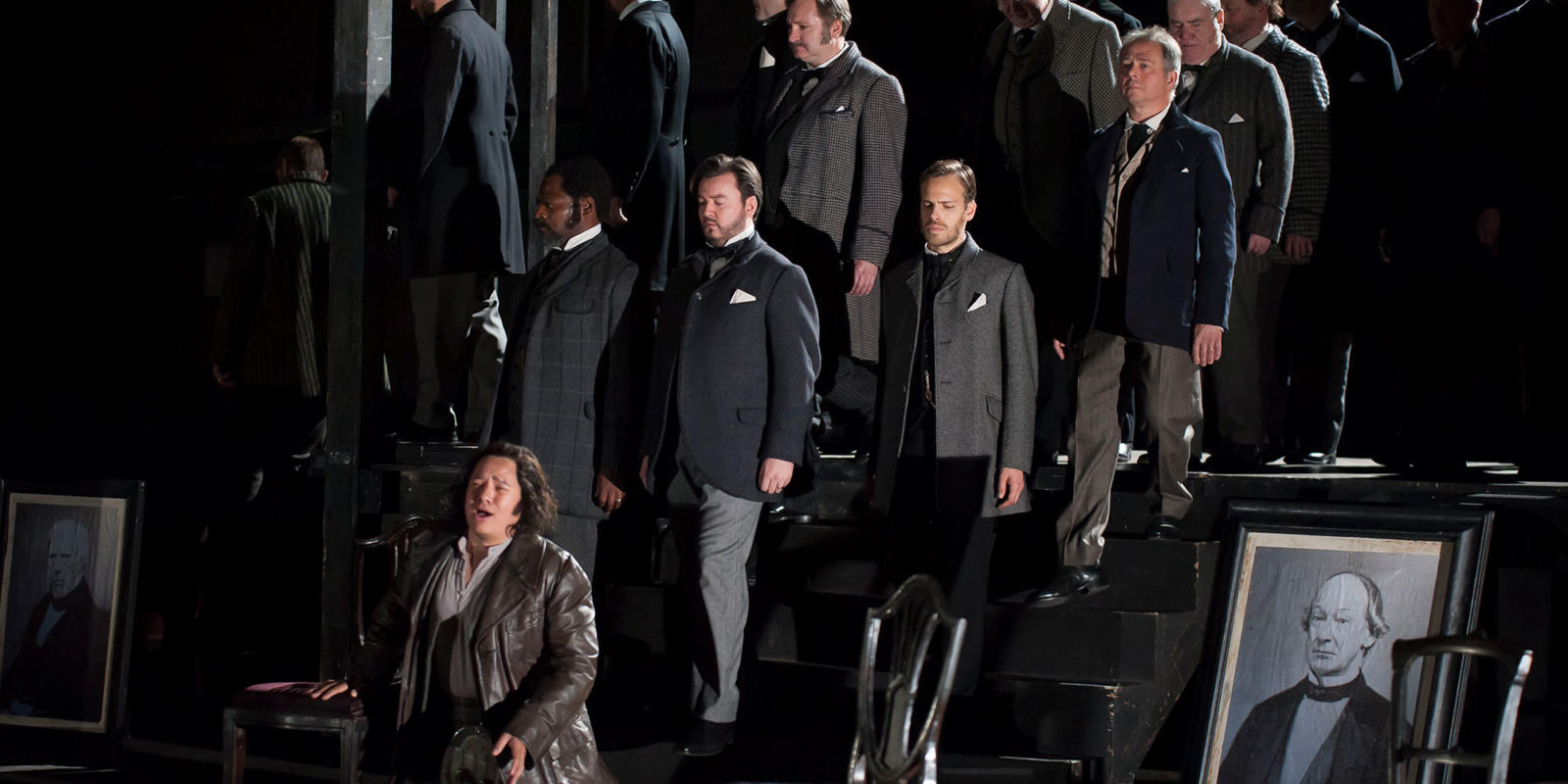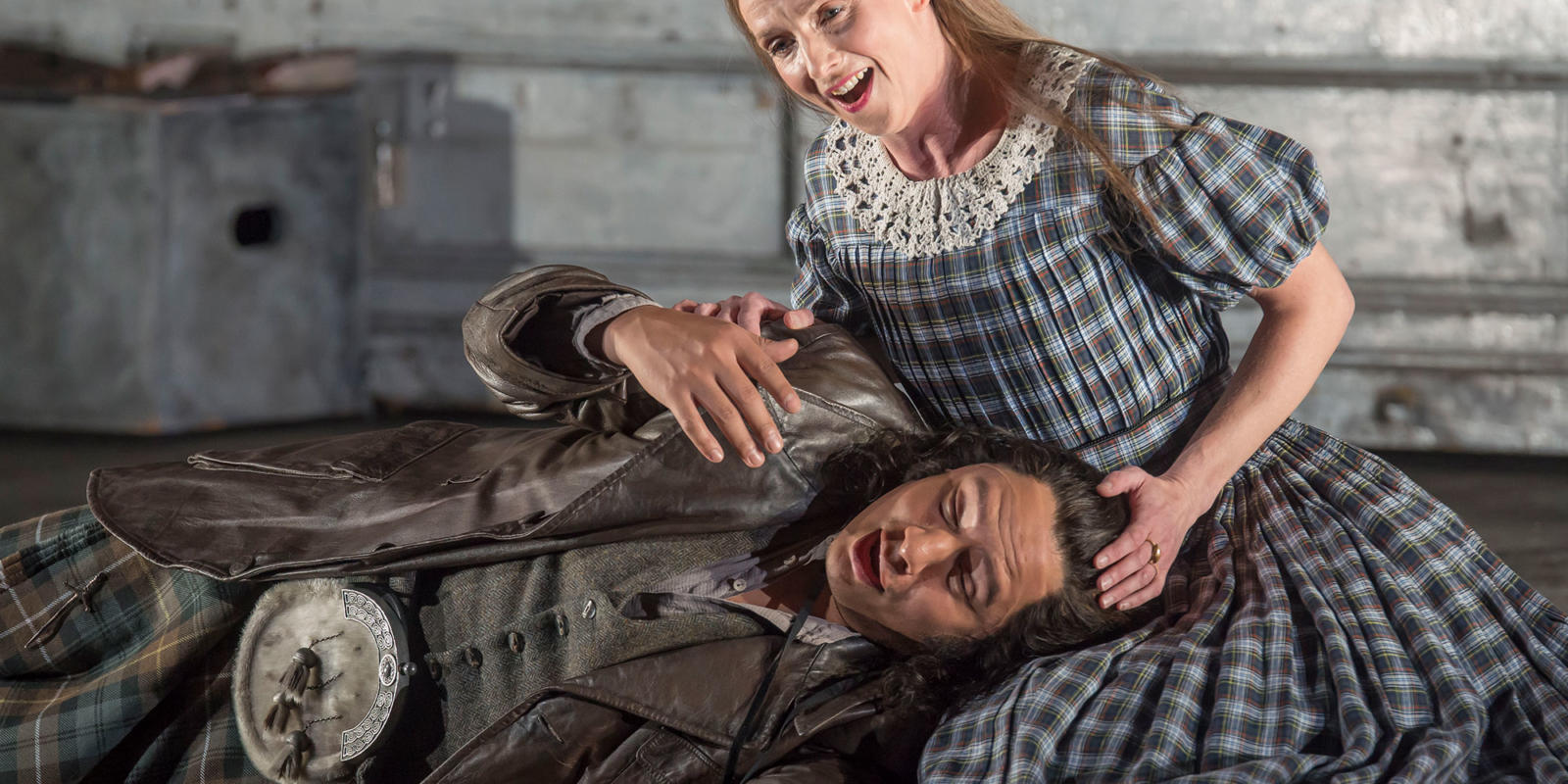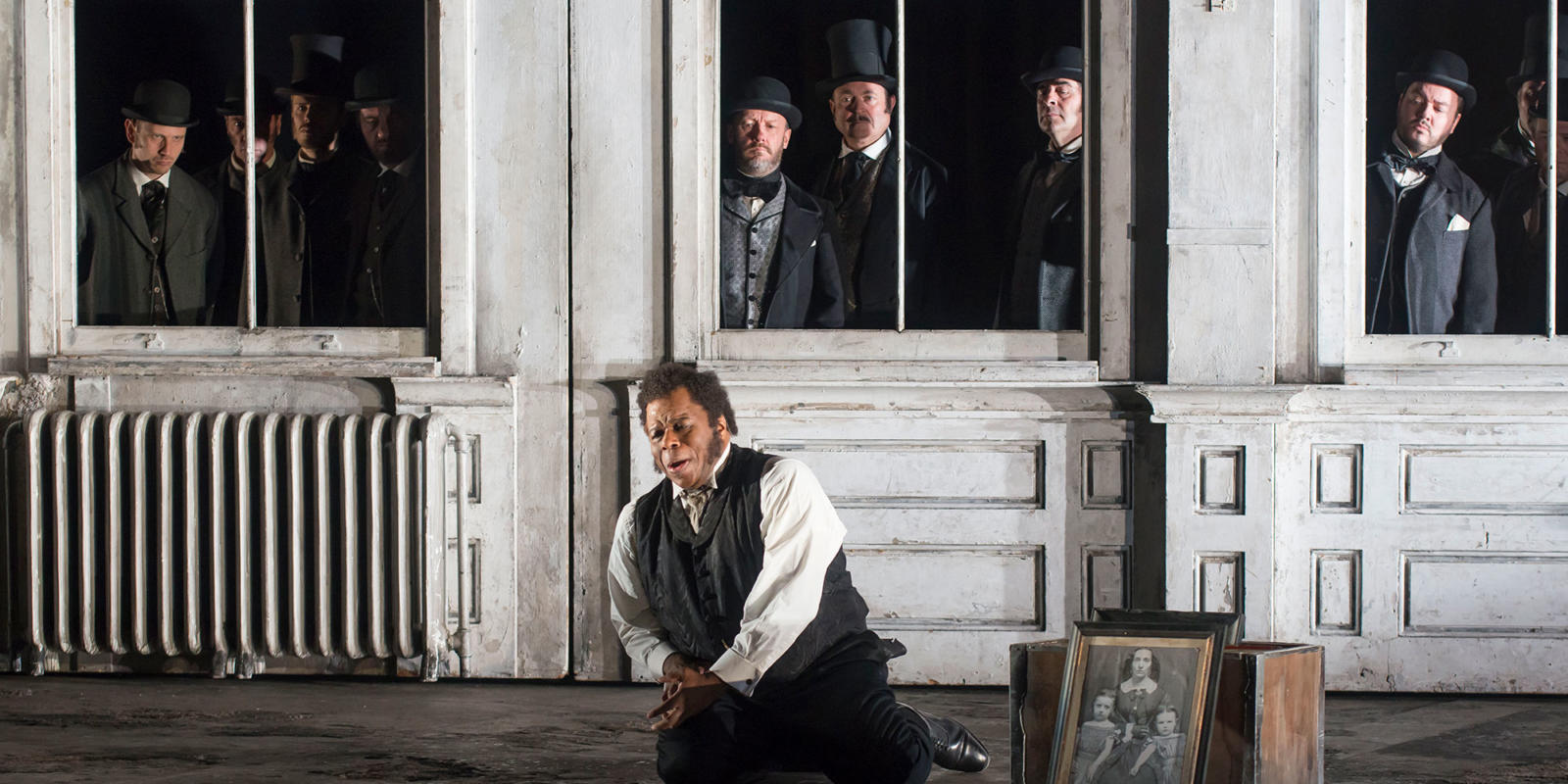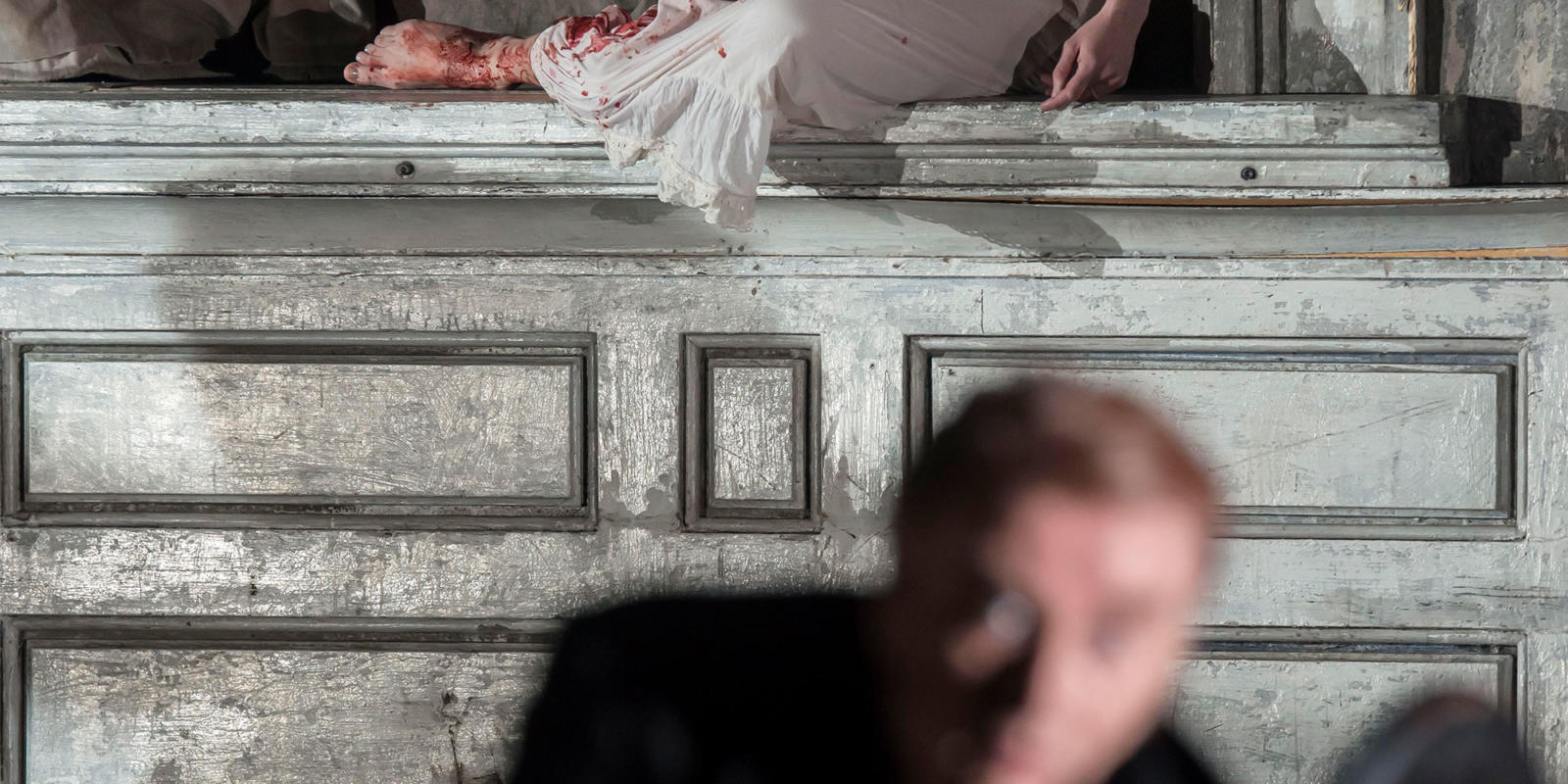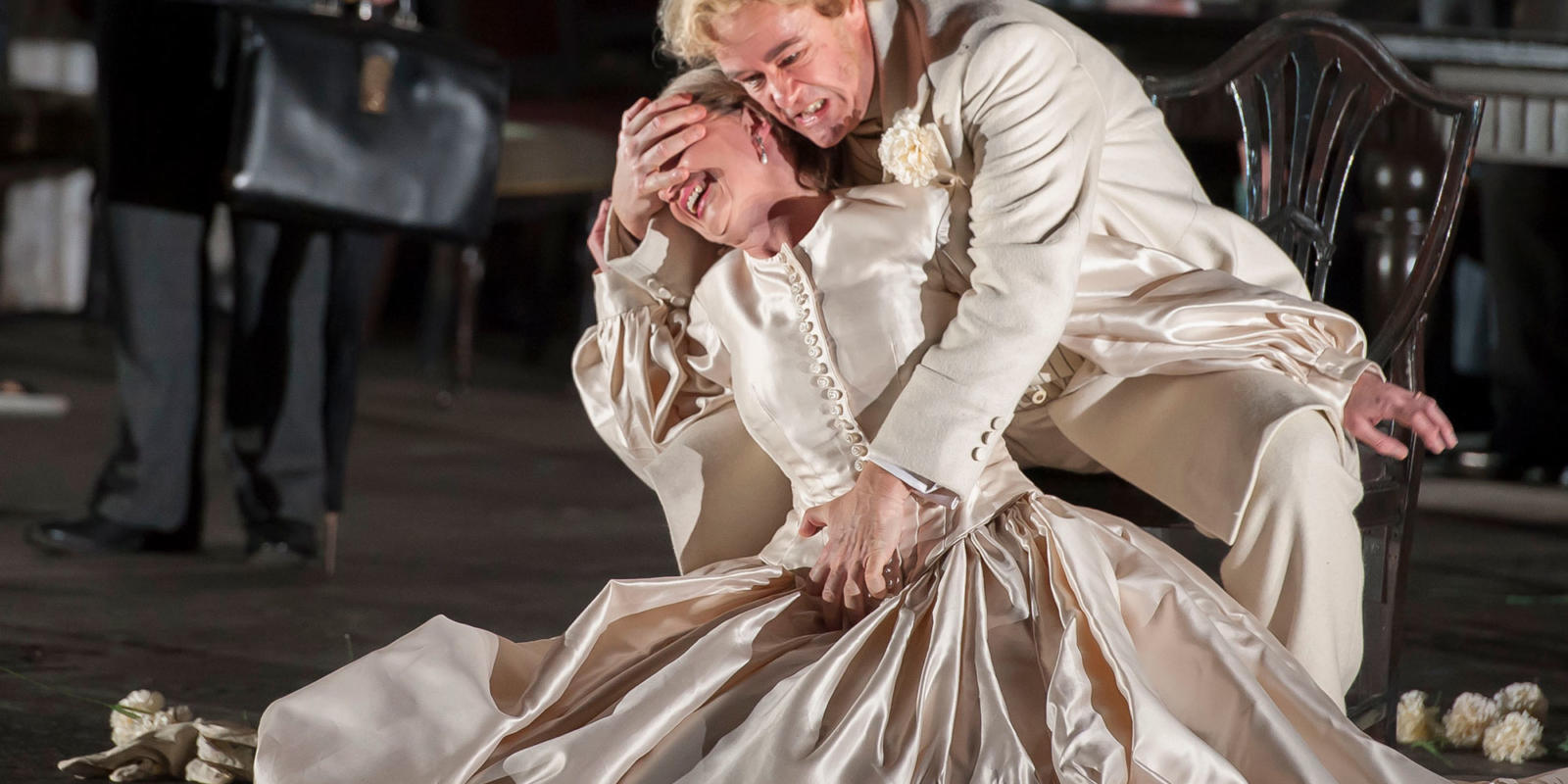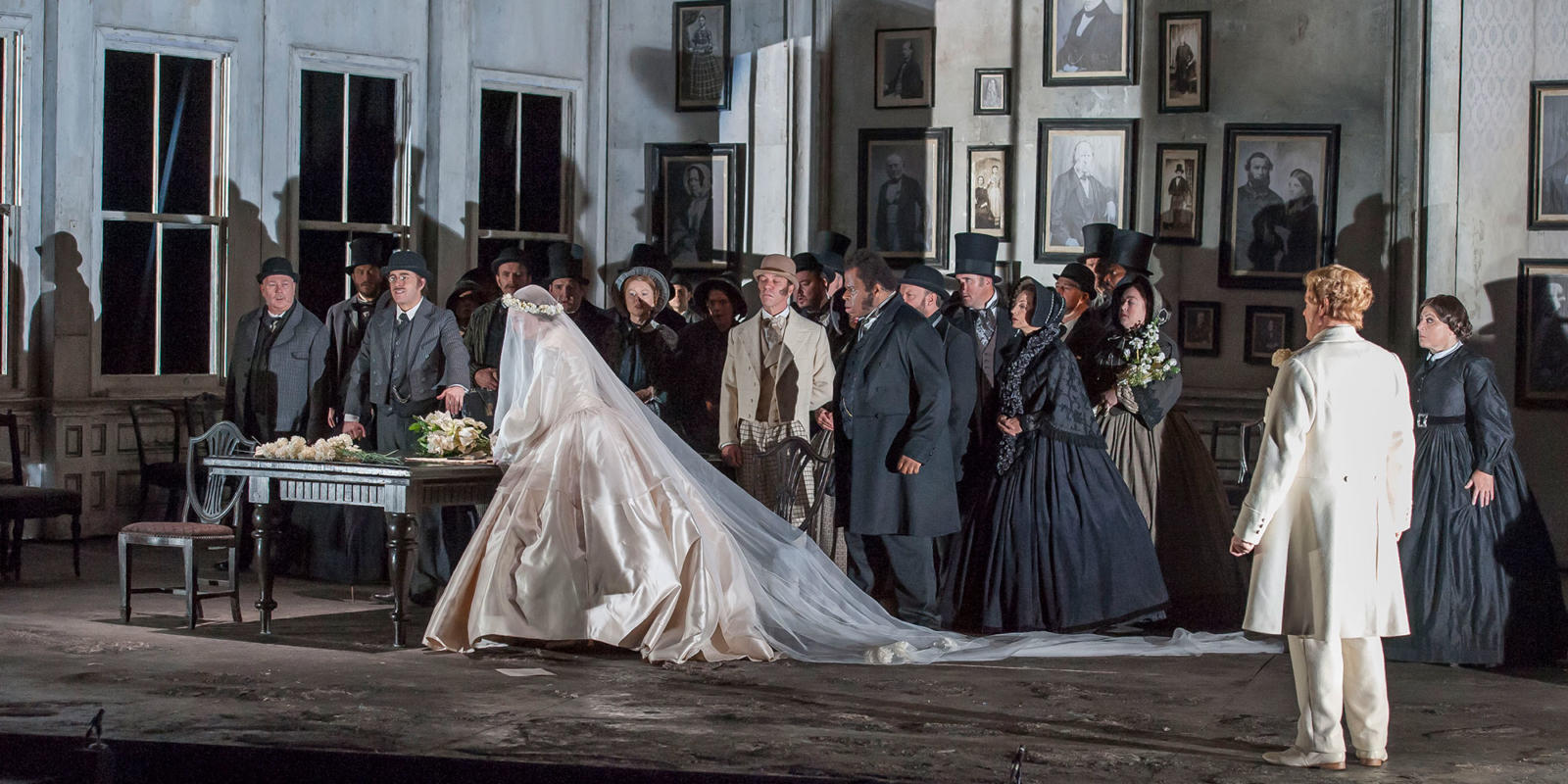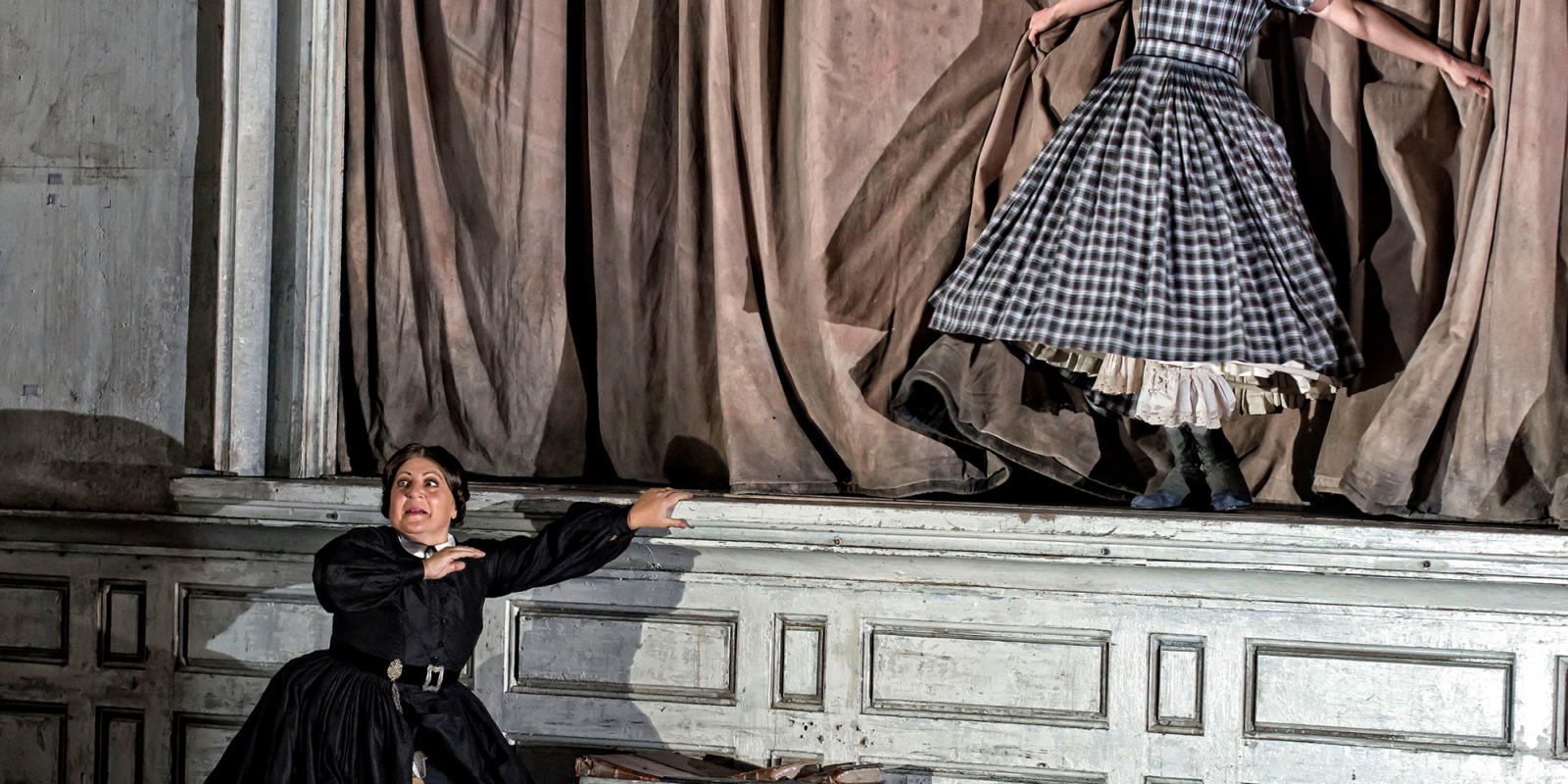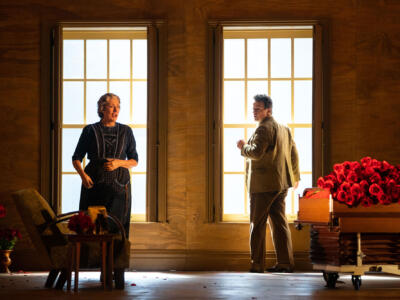An Introduction to Lucia di Lammermoor
Here’s everything you need to know about ENO’s production of Donizetti’s Lucia di Lammermoor.
It’s a tragic opera by Gaetano Donizetti
Set in nineteenth-century Scotland, Lucia di Lammermoor tells the emotional tale of Lucia, a woman who is constantly manipulated by the men in her life. When she gets caught up in a family feud by falling in love with their sworn enemy, Lucia is pushed to her limit and finally decides to take control of her situation, with tragic consequences for the life of her new husband and her sanity.
The opera is perhaps most famous for the third act’s ‘mad scene’, in which Lucia descends into insanity. The mad scene was a popular convention in the bel canto era of opera, especially amongst French and Italian composers.
Video
It’s based on The Bride of Lammermoor by Walter Scott
The Bride of Lammermoor is one of Scottish novelist, poet and playwright, Sir Walter Scott’s best known novels from his Tales of my Landlord series. Originally in English, the novel and the opera share the same setting and storyline. The main difference between both works is that of the character names. Italian librettist Salvatore Cammarano changed the novels’ anglicised names to Italian versions for the opera, meaning Lucy became Lucia and Edgar, Edgardo.
Scott based his novel on a real-life family tragedy
The heroine of the novel, Lucy, is based on Janet Dalrymple, the daughter of the 1st Viscount of Stair who secretly got engaged to a political enemy of her family. Just like Lucy in the novel, Janet was forced to marry a different suitor and, overcome with stress, subsequently stabbed him on her wedding night. The real life Lord Arturo (David Dunbar), survived the stabbing, but Janet did not.
Donizetti’s first Edgardo pioneered singing a high C from the chest
In 1837 (two years after the premiere of Lucia di Lammermoor) Gilbert Duprez became the leading Parisian tenor when he sang the first ever high C from the chest, a more common sound today produced by the likes of Pavarotti. The new note, being so different than what the audience were used to, was described by Rossini (who was watching the performance) as the ‘squawk of a capon whose throat is being cut’. Unfortunately, also sat in the crowd was Adolphe Nourrit, the reigning Parisian tenor at the time, who, upon hearing Duprez’s note, concluded that his career was over, and two years later ended his life.
Photo Gallery
David Alden’s production returned to the London Coliseum for the first time in eight years
This is the second revival of the Olivier Award-Winning director’s production. David has been working with ENO since 1984 and in that time directed productions of Handel’s Ariodante, Wagner’s Tristan and Isolde, and a production of Janáček’s Jenůfa that won the Olivier Award for best new opera production.

